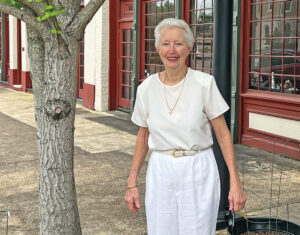If the demand for electrical service continues to climb, utility customers can expect steady increases in their bills over the next 20 years.
Mississippi University for Women”s College of Business and Legal Studies hosted the school”s first energy conference at Nissan Auditorium Tuesday morning.
The event”s keynote speaker was mechanical engineer Kim Greene, the chief financial officer for the Tennessee Valley Authority.
Greene”s message to the crowd made up of students, politicians and utility professionals was America”s need to embrace all energy production technologies and to understand the relatively low rates Americans have enjoyed cannot be continued forever.
“We have to start thinking about an electricity and natural gas energy policy much more in depth than we ever have before,” she said.
The country”s providers of energy, Greene noted, had to start getting away from what might be comfortable in favor of greater efficiency and a balance between the economic and environmental.
“We build power plants today the way we did 50 years ago,” she said. “We”ve got to start thinking about moving the technology forward. The traditional method of energy production relies heavily on fossil fuels, and we have to find other ways which focus upon safety, reliability and energy efficiency while being relatively cheap.”
According to Greene, the answer to America”s future energy needs did not sit in any one technology”s hands, but all technologies must be embraced — even those which make people a bit uncomfortable.
“People have to get comfortable with nuclear power. It has to be part of the solution,” she said, noting a single nuclear power plant can produce the same amount of power as 19 square miles of wind turbines and 78 square miles of solar paneling.
There are 104 commercial nuclear generating units licensed by the U.S. Nuclear Regulatory Commission to operate in the United States, according to the Energy Information Administration.
“We have to do a better job marketing nuclear energy,” she said, also saying the world”s demand for electricity and America”s interest in tightening emission standards would almost certainly lead to an increase in the cost of energy.
“We haven”t been focusing on energy efficiency,” she said. “Renewable energy can help but they can”t do everything.”
Part of the solution, said Greene, was for people to understand exactly how much energy they are consuming on a day-to-day basis. While many appliances might individually be more energy efficient than their older counterparts, the volume by which people are plugging in devices is leading to a staggering demand for power.
According to Greene, 42-inch plasma screen television uses 250 watts of power versus a 27-inch regular television which uses only 100 watts.
“Unplug your cell phone chargers when you are not using them,” said Greene after noting the chargers suck power from an outlet constantly while plugged in — whether they are charging a phone or not. “And those beautiful digital photo frames? One of those uses as much power as your refrigerator.”
“We are unconsciously becoming greater users, and we expect a 50-percent increase in demand over the next 20 years,” said Greene.
Mississippi”s average cost of energy is below the national average at about 9 cents per kilowatt hour. The average national cost is at about 10 cents per kilowatt hour.
The event was sponsored by Atmos Energy, Columbus Light and Water, the Columbus-Lowndes Development Link, 4-County Electric Power Association, Paccar and the Women”s Center for Entrepreneurship.
The Dispatch Editorial Board is made up of publisher Peter Imes, columnist Slim Smith, managing editor Zack Plair and senior newsroom staff.
You can help your community
Quality, in-depth journalism is essential to a healthy community. The Dispatch brings you the most complete reporting and insightful commentary in the Golden Triangle, but we need your help to continue our efforts. In the past week, our reporters have posted 37 articles to cdispatch.com. Please consider subscribing to our website for only $2.30 per week to help support local journalism and our community.






